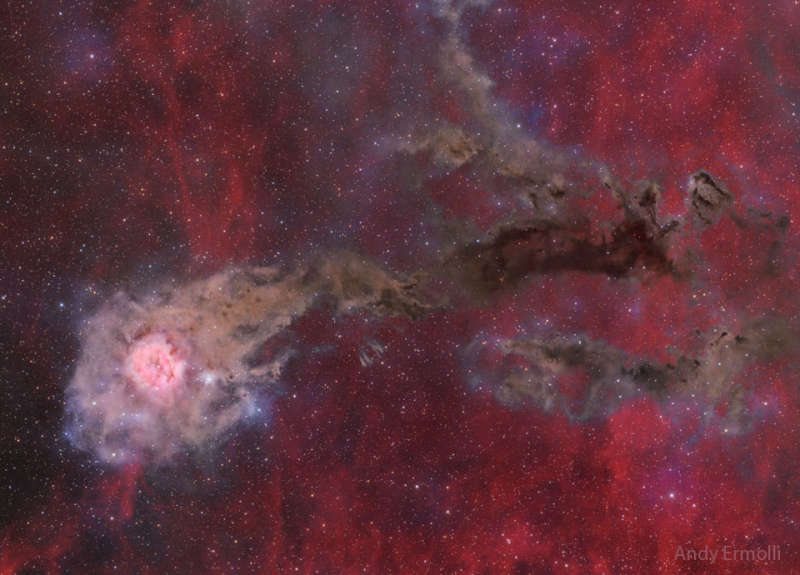Credit & Copyright: Andy Ermolli
Explanation:
When does a nebula look like a comet?
In this crowded
starfield, covering over two degrees within the high flying
constellation of the Swan
(Cygnus),
the eye is drawn to the Cocoon Nebula.
A compact star forming region,
the cosmic Cocoon
punctuates a nebula bright in
emission and
reflection on the left,
with a long trail of interstellar dust clouds to the right, making
the entire complex appear a bit
like a comet.
Cataloged as
IC 5146,
the central bright head of the nebula spans about 10
light years,
while the dark
dusty
tail spans nearly 100 light years.
Both are located about 2,500 light years away.
The bright star near the bright nebula's center, likely
only a few hundred thousand years old,
supplies power to the nebular glow as it helps
clear out
a cavity in the
molecular cloud's star forming dust and gas.
The long dusty filaments of the tail, although dark in this
visible light image,
are themselves hiding stars in the process of
formation, stars that
can be seen at
infrared wavelengths.
1999 2000 2001 2002 2003 2004 2005 2006 2007 2008 2009 2010 2011 2012 2013 2014 2015 2016 2017 2018 2019 2020 2021 2022 2023 2024 2025 |
Январь Февраль Март Апрель Май Июнь Июль Август Сентябрь Октябрь Ноябрь Декабрь |
NASA Web Site Statements, Warnings, and Disclaimers
NASA Official: Jay Norris. Specific rights apply.
A service of: LHEA at NASA / GSFC
& Michigan Tech. U.
|
Публикации с ключевыми словами:
star formation - туманность Кокон - звездообразование
Публикации со словами: star formation - туманность Кокон - звездообразование | |
См. также:
Все публикации на ту же тему >> | |
